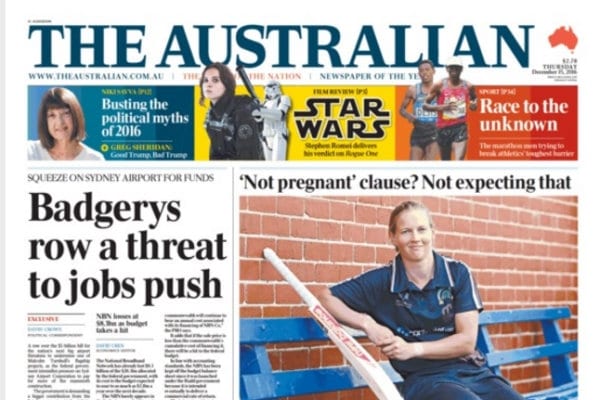
It’s not every day that women’s sports makes the front page of any newspaper, let alone a national broadsheet like The Australian. It has today but hold off on celebrating.
Meg Lanning, the captain of Australia’s women’s cricket team, is not on the front page to talk about the growing number of women playing and watching the game. Nor is she there to talk about the successful launch of the Big Bash league.
She is on the front page because Peter Lalor, a senior sports reporter with The Australian, has written a sobering expose which reveals the extent of the disparity between male and female cricketers.
“Male cricketers fly home to be with their wives when their children are born; women have to vouch they aren’t pregnant when they sign a contract,” Lalor writes. “Men are guaranteed a doctor on standby at all games; women in the National Cricket League are not. Women who work for Cricket Australia in non-playing roles get maternity leave. Women cricketers who sign a contract with the organisation don’t.”
Great/highly irritating story in the @australian abt the different treatment of male & female cricket players. pic.twitter.com/DTkRiR3o7B
— Stephanie Peatling (@srpeatling) December 14, 2016

